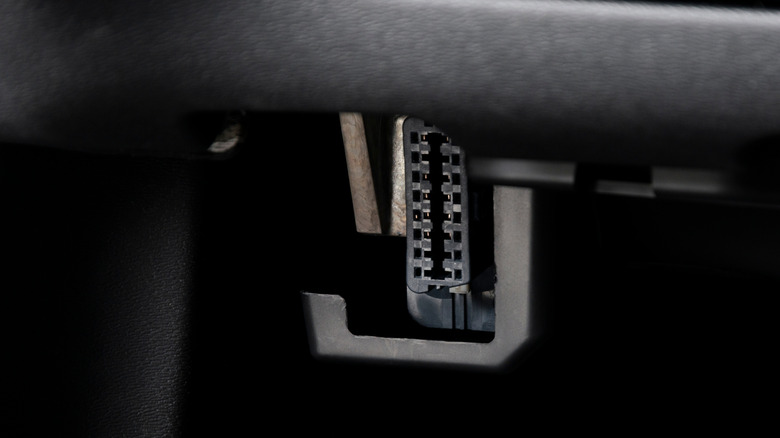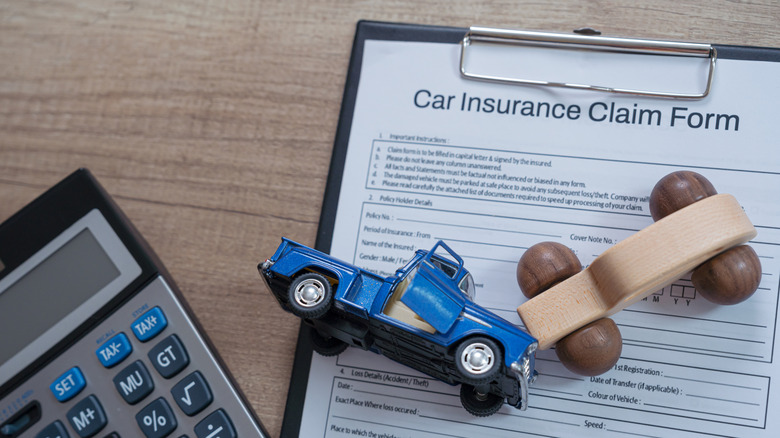Why You May Want To Avoid Progressive's Snapshot Program, According To Drivers
There are a number of good reasons why drivers would consider joining an insurance program such as Progressive's Snapshot, including saving money on their insurance. However, not every driver is going to see those savings, as the program tracks nearly everything about your driving habits. For those who consider themselves safe drivers, the discounts they can receive from the Snapshot program can save them hundreds.
Unfortunately, not everyone who considers themselves a safe driver is one, and what one person may consider safe driving won't be the same as another's. According to Progressive, the "Snapshot program personalizes your car insurance rate based on your actual driving [...] That means you pay based on how and how much you drive instead of just traditional factors."
The insurance company does admit that some drivers could see an increased rate due to "high-risk driving, [but] most drivers save with Snapshot." Progressive gives tips on how to help maximize your Snapshot discount, which includes limiting the number of hard brakes and quick accelerations when driving, avoiding driving late at night, spending less time driving, and staying off your phone while driving.
The Snapshot program can be used in two ways: the first is by installing a device in your vehicle, which is connected to your vehicle's OBD-II port and collects data from the vehicle's computer system. The second system is through the Progressive mobile app, which will track your driving.
In order to find the best information from Progressive Snapshot users, we looked at what customers had to say across vehicle-specific forums and larger online forums. These customers reported using the Snapshot program and gave their opinions on the device.
Why should it be avoided?
There are a number of issues that have arisen since the Progressive Snapshot program began in 2011. One of the most dangerous and terrifying situations began with a Progressive customer using the OBD-II port version.
A user on Reddit posted their personal story, where their vehicle stalled in the middle of a major roadway and refused to turn back on. After the vehicle was brought to a local mechanic, the Snapshot OBD-II device was found to be the cause of the stall. The device had thrown 49 error codes at the vehicle's computer, overwhelming the system and stalling the vehicle. Once the device was removed, the vehicle turned on and was able to be driven normally.
Another potential reason to avoid the Snapshot program, especially if you're an EV owner or someone who uses self-driving or autonomous vehicle systems, is that the Snapshot can raise your rate if it detects quick accelerations or hard stops. Users on a Tesla Cybertruck forum claimed that, when using the full self-driving technology for a majority of their trips, the Snapshot program significantly increased their premium rate.
Drivers who work delivery jobs with their own vehicle, whether that's people or goods, should absolutely avoid using the Snapshot program. Two of the key points Progressive takes a look at during driving are how many hours a vehicle is in use and what time of day the vehicle is being driven.
Programs similar to Progressive Snapshot
Progressive is far from the only car insurance company with a Snapshot device or something similar. Beyond Progressive, other major insurance companies that offer tracking devices include State Farm (Drive Safe & Save), Travelers (IntelliDrive), USAA (SafePilot), Geico (DriveEasy), Allstate (Drivewise), Nationwide (SmartRide), American Family (KnowYourDrive), and Farmers (Signal).
However, not many car owners are even aware that their insurance company offers these tracking devices. According to a survey of more than 40,000 policyholders run by Consumer Reports, only 28% of those surveyed knew that their insurance company had a driver monitoring program. They also found that only 14% of policyholders in the survey had even used the tracking devices.
The Consumer Reports survey also looked at the average savings across multiple demographics for users of the tracking devices, as well as the maximum discounts offered by the insurance companies. For demographics, young people earned the best savings, around $145 off their average bill. For drivers who are 70 and over, the average savings was just $93.
The biggest average discount coming on the insurance company side is Nationwide and Allstate, both of which offer up to a 40% discount.


